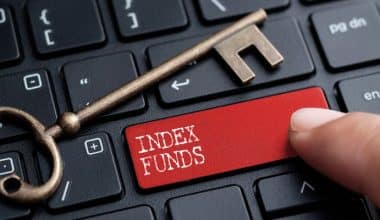If you want a high-interest-rate investment with inflation protection and the security of government backing, Series I bonds could be a good fit for your portfolio. These bonds’ interest rates rise in tandem with inflation, ensuring that your payout keeps pace with rising prices and that you don’t lose purchasing power over time. Here’s how to buy I bonds on fidelity, as well as how these inflation-indexed investments work and what to avoid. In addition, we’ll reveal a little-known trick that will allow you to invest even more in these special bonds.
This inflation protection on I bonds has sparked interest among savers in the last year, as inflation has risen to its highest level in 40 years, reaching 8.5 percent in March 2022. Savers have been looking for any way to shield their funds from the ravages of rising prices. Despite slightly slowing to 8.3 percent in April, the consumer price index remains extremely high.
Two Ways to Buy Treasury Bonds
The first way to buy treasury bonds is through TreasuryDirect. TreasuryDirect.gov enables you to buy treasury bonds straight from the government each time treasury bonds are issued. Fortunately, all of you already have a TreasuryDirect.gov account because all of you elected to buy I Bonds in 2021, 2022, and 2023.
Too bad individuals are limited to buying $10,000 a year. As a result, more people are looking to buy Treasury bonds, which have no minimum purchase amount. Regrettably, the TreasuryDirect.gov website is difficult to navigate. Don’t forget your password or the answers to your security questions. It will take one hour to reach someone who can reset your password.
Furthermore, you can only buy treasury bills (with maturities of one year or less) or treasury bonds when the government decides to auction them. And even when the bills or bonds are available, the yields are difficult to determine!
An online brokerage account, such as Fidelity, Charles Schwab, or E*Trade, is the second way to buy Treasury bonds. You pay a small fee in exchange for a lower bond yield. However, for most investors, it may be much easier with a lot more variety.
Because I use the Fidelity platform, I’ll show you how to buy treasury bonds using it. However, all online brokerage accounts are the same.
How to Buy I Bonds on Fidelity
#1. Determine if you qualify
The U.S. Treasury doesn’t let just anyone purchase I bonds, so you’ll need to see if you qualify to buy them. You’ll need to be one of the following:
- A U.S. citizen, even if you live abroad
- A U.S. resident
- A civilian employee of the U.S. government, regardless of where you live
In addition, trusts and estates can purchase I bonds in some situations, but companies, partnerships, and other organizations may not.
#2. Create a TreasuryDirect account.
If you meet the requirements, you can open a TreasuryDirect account. This Fidelity account allows you to buy bonds directly from the government, including Series EE bonds, Treasury bills, Treasury notes, Treasury bonds, and TIPS.
A taxpayer identification number (such as a Social Security number), a U.S. address of record, a checking or savings account, an email address, and a web browser that supports 128-bit encryption is required for individuals opening a TreasuryDirect account.
You’ll enter your information as directed and have your account up and running in a matter of minutes. To help protect your account, you’ll create a password and three security questions. Children under the age of 18 cannot open a TreasuryDirect account on their own, but a parent or other adult custodian may open an account for the minor that is linked to their own.
#3. Submit your order
After you’ve created your account, TreasuryDirect will email you your account number, which you can use to log in. Once in the account, click “BuyDirect,” then select Series I bonds and the amount you want to buy. Then select the bank account to use and the date you’d like to make the purchase. You can also set up recurring purchases.
With electronic bonds exceeding $25, you can buy in any increment down to the cent. That is, if you wanted, you could buy i bond on fidelity for $76.53.
Review your purchase before submitting your order. Once your order is complete, your bonds will be stored in your TreasuryDirect account, where you can access them at any time.
If you wish to utilize your federal tax refund to buy paper I bonds, you must complete Form 8888 and submit it with your tax return. Paper bonds are available in denominations of $50, $100, $200, $500, and $1,000. Your bonds will be mailed to you after the IRS has processed your return.
What are I Bonds and how do They Work on Fidelity?
An I bond is a bond issued by the federal government of the United States that generates interest in two ways: a fixed rate and a variable rate that is changed twice a year based on inflation. If inflation rises or falls, that variable rate is changed to offset it, protecting the money’s purchasing value.
The bond pays interest for 30 years or until you redeem it — and it’s guaranteed by the United States government, which has historically been one of the best credit risks in the world.
For the first six months that you own the I bond, you will receive the current interest rate. For example, an I bond issued between May and October 2022 yields interest at a rate of 9.62 percent per year. This implies that even if you buy the bonds on Fidelity in October, you’ll still get the same rate for the full six months. Your bond will then adjust to the new rate published in October.
The bonds cannot be cashed for the first 12 months of ownership. If you redeem the bond before it has been in force for at least five years, you will be charged a penalty equal to the last three months’ interest. If you’ve been affected by a natural disaster, extra provisions may apply.
Series I bonds do give some tax benefits. The interest on the bonds is exempt from state and local taxes, but the gains are subject to federal taxes. Using the interest to pay for college may also assist you to avoid paying federal taxes on the interest income.
Sadly, Series I bonds cannot be purchased in a tax-advantaged account such as an IRA.
How much can you Buy in I Bonds on Fidelity?
An individual can buy up to the following sums of Series I bonds in any calendar year on fidelity:
- $10,000 in TreasuryDirect electronic I bonds
- $5,000 in the paper I bonds along with your federal tax refund
That implies an individual might acquire up to $15,000 in I bonds each year if their tax refund is substantial enough to max out the paper I bond component. Many people are unaware that their federal tax return entitles them to an additional allocation of I bonds, so it may make sense to withhold more money from your paycheck if you want to take advantage of this bonus allotment.
Any bonds you buy for yourself or that are purchased for you count toward the maximum. (There is an exception to this rule in the case of a bond that has been transferred to you due to the death of the bond’s original owner. The amount does not count against the limit in this scenario.)
It’s also worth noting that these restrictions apply to recipients of I bonds. As a result, an individual might buy an unlimited number of bonds as a present for any TreasuryDirect account holder, including minors. For gifts, the recipient is subject to the same annual limits: $10,000 for electronic bonds and $5,000 for paper bonds purchased through federal tax returns.
Therefore, an individual might be able to purchase as much as $15,000 in I bonds in a year, while a family of four might be able to acquire as much as $60,000 in I bonds in a single calendar year. However, the family would need a steep refund check to afford that potential $20,000 in paper bonds.
The Different Types of Bonds You Can Buy on Fidelity
Treasury bonds in the United States are risk-free investments with varying yields and maturities. U.S. Treasury bonds are one safe investment option because everyone should have a certain percentage of their net worth in cash or cash equivalents.
Online savings accounts, Certificates of Deposit (CDs), and AAA-rated municipal bonds are other safe ways to invest cash.
Just be aware that municipalities can occasionally fall behind on their payments if the economy deteriorates sufficiently, as it did during the 2008 global financial crisis. If you buy a municipal bond from your state, at the very least, you won’t have to pay federal or state income taxes on the coupon payments.
Does Fidelity have an I-bond ETF?
Yes. Fidelity and iShares® bond ETFs offer more.
Select from a range of commission-free bond ETFs for online purchases with low expense ratios to help you generate income. To help round out your portfolio, choose from a diverse selection of some of the most liquid and largest ETFs available.
Can I buy I bonds in my brokerage account?
Individuals cannot buy I bonds through a brokerage account; they must do so through the U.S. Treasury Department’s website, and there is a maximum investment amount. You can generally buy no more than $10,000 in I bonds per year, plus an additional $5,000 if you choose to invest your tax refund in paper bonds.
What is the downside to I bonds?
I bonds come with a high-interest rate during inflationary periods, they’re low-risk, and they help protect against inflation. Rates are variable, there is a lockup period and an early withdrawal penalty, and you can only invest a certain amount.
Do I need a TreasuryDirect account to buy I bonds?
Depending. That is, in order to purchase electronic I bonds, you must first open a TreasuryDirect account. With your IRS tax refund, you can purchase paper I bonds.
What is the current rate for I bonds?
The composite rate for I bonds will be 6.89%, from November 2022 to April 2023.
Are there any I bond ETFs?
Yes. iBonds ETF strategies include US Treasury bonds, municipal bonds, investment-grade bonds, and high-yield bonds. I Bond ETFs has a solution to help you build a customized portfolio for your specific needs, whether you are looking for a conservative or aggressive strategy.
Where can I find Series I bonds?
Navigate to your TreasuryDirect account. Select “Buy Direct.” Click Submit after selecting either EE bonds or I bonds. Fill out the rest of the information.
Conclusion
With Americans facing such high inflation, savers are looking for any way to protect themselves from rising prices.
Series I bonds can help you do that, but savers are limited to a maximum of $2,000 per year. Plus, you get the safety of a government-backed asset and a high-interest rate, at least for the near future.
Related Articles
- HOW TO BUY I BONDS, Explained!! What You Should Know
- SAVINGS BONDS FOR KIDS: How to Invest in Savings Bonds for Kids
- HOW TO INVEST IN BONDS: Guide & What You Should Know
- HOW TO BUY I BONDS FROM TREASURY: All You Should Know
- HOW TO BUY TREASURY BONDS: What You Should Know & Guide






